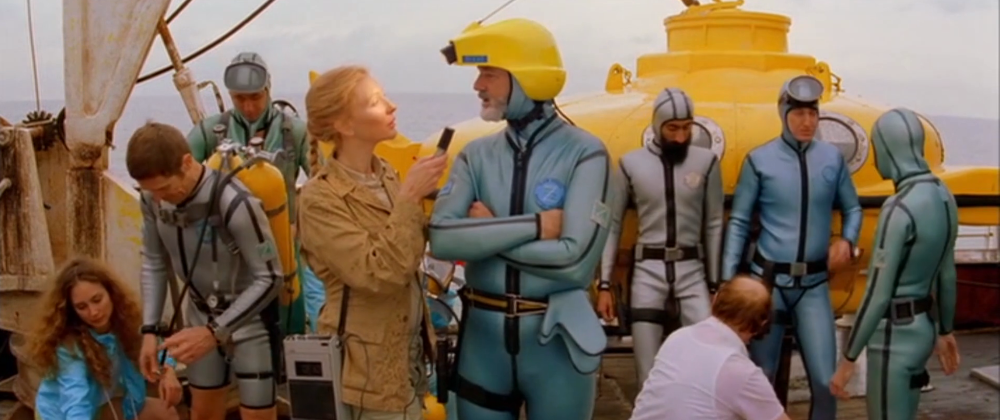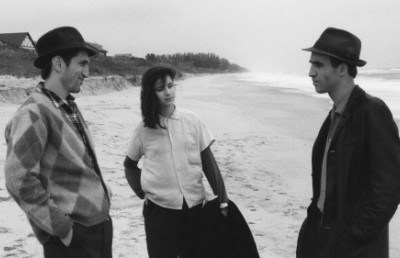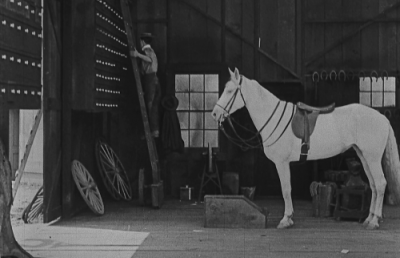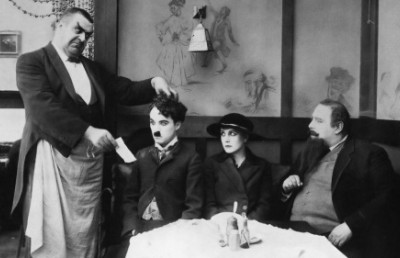Irony, Control, and Distance in The Life Aquatic with Steve Zissou

Writing in 1988, Fredric Jameson deemed pastiche to be ‘one of the most significant features or practices in postmodernism’ (Jameson, 544). Where parody, for Jameson, acts as satirical mimicry of a particular style, pastiche is ‘a neutral practice of such mimicry, without parody’s ulterior motive’ (Jameson, 545). He contrasts this ‘modern practice of a kind of blank irony’ (Jameson, 545) with Wayne Booth’s identification of stable irony in which ‘the speaker or author makes available to the reader an assertion or position which … serves as firm ground for ironically … subverting the surface meaning’ (Abrams, 136). From this, one can infer that unstable irony, a device offering ‘no fixed standpoint which is not itself undercut by further ironies’ (Abrams, 136), shares some of the intrinsic qualities of Jameson’s postmodernism. Soon after the turn of the century, in her conclusion to ‘The Politics of Postmodernism’, Linda Hutcheon declared ‘The Postmodern moment has passed’ (Hutcheon, 165 – 166) before stating that ‘Post-postmodernism needs a new label of its own’ (Hutcheon, 166) and concluding with a ‘challenge to readers to find it – and name it for the twenty-first century’ (Hutcheon, 166). Timotheus Vermeulen and Robin van den Akker provide one possible response to Hutcheon’s challenge in their definition of metamodernism. For them, metamodernism is an oscillation between ‘a modern enthusiasm and a postmodern irony’ (Vermeulen and van den Akker, 5 -6) often fluctuating between a state of ‘naïveté and knowingness’ (Vermeulen and van den Akker, 6). A metamodern text might project the blank, unstable ironic position observed by Jameson as a key marker of postmodernism, whilst also displaying a genuine emotional engagement and empathy with its characters and subject matter. The oscillation between the states described by Vermeulen and van den Akker are key components to the sensibility of ‘quirky’ cinema, as defined by James MacDowell in ‘Notes on Quirky’. MacDowell differentiates quirky cinema from Jeffrey Sconce’s recognition of the American ‘smart’ film that ‘sees everything … in giant quotation marks’ (Sconce, 358), instead stating that quirky cinema ‘comes far closer to expressing precisely those attitudes – “sincerity”, “positivity”, “passion” – to which the smart is contrasted’ (MacDowell, 11) and might better be thought of as ‘a particular type of smart film’ (MacDowell, 11). It is worth noting that Sconce’s description of a smart film’s ‘blank disengagement’ (Sconce, 352) uses the same terminology as Jameson’s discussion of blank irony in postmodernism. Indeed, the films to which Sconce refers, such as Happiness (Todd Solondz, 1998) and Very Bad Things (Peter Berg, 1998) occupy a position of nihilism or uncomfortably dark humour which, whilst occasionally present in quirky films such as Adaptation (Spike Jonze, 2002) and Punch Drunk Love (Paul Thomas Anderson, 2002), is always offset in quirky cinema by a sincerity and emotional engagement as discussed by MacDowell.
Wes Anderson is ‘one of a handful of American filmmakers to whom the moniker “quirky” is regularly applied’ (Orgeron, 18) and one who is directly referred to in both Sconce and MacDowell’s scholarship. In his fourth film, The Life Aquatic with Steve Zissou (Wes Anderson, 2004), one can see a metamodern approach at work as the film moves from an extreme ironic detachment from its central character, the eponymous Steve Zissou (Bill Murray), towards an emotional sincerity and sense of empathy during its climax. Vermeulen and van den Akker are keen to stress that the oscillation of metamodernism should not be viewed as a balance, but rather ‘a pendulum swinging between … innumerable poles. Each time the metamodern enthusiasm swings toward fanaticism, gravity pulls it back toward irony’ (Vermeulen and van den Akker, 6) which is arguably one of the primary reasons the film failed to connect with both critics and audiences during its initial release. This ‘tonal seesaw’ (Browning, 62) has been the cause for much critical derision surrounding this film and Anderson’s wider oeuvre; however, in this essay I will suggest that it can be validated within The Life Aquatic with Steve Zissou as emblematic of the themes of control explored within the film, placing particular emphasis on the portrayal of Steve as documentary maker within the narrative and Anderson as director of the film we are watching. I will begin by focusing on the similarities and disparities between Anderson’s film and the faux documentaries within it, before moving on to explore the distance between the film and Steve, particularly focusing on its attitude towards him, before ultimately examining the narrative arc of the film as a whole in an attempt to chart its shifts in tone which mark it as a metamodern work that fluctuates between pastiche and new sincerity.
Throughout The Life Aquatic with Steve Zissou, Anderson presents the viewer and occasionally the characters in the diegesis of the film, with a series of images from the documentaries created by Team Zissou. These faux documentaries are heavily inspired by those of the real-life oceanographer Jacques Cousteau. In an interview with Matt Zoller Seitz, Anderson states, ‘I started to get this impression of Cousteau not just as an oceanographer and this kind of superhero scientist, but also this star, someone who had to … deal with funding and ratings and fame’ (Seitz, 166). Whilst Anderson here is stressing his focus on what lies beneath the highly stylised surface of Cousteau’s documentaries, the aesthetic of these films bleeds into Anderson’s work, influencing the visual style in a way not too dissimilar from what Jameson describes as pastiche in his aforementioned essay on postmodernism. This is most evident in the use of the matching brightly-coloured idiosyncratic hats worn by all members of Team Zissou. In his piece exploring the manipulation of tone in Anderson’s film, John Gibbs suggests that ‘as well as shaping the fictional world of the film he is making, Steve shapes the world of the film we are watching’ (Gibbs, 142), citing the matching costumes of Team Zissou’s members as a unified and consistent aspect of the style between the world of the documentaries and that of the film. When referring to the blocking in the film, Gibbs emphasises the use of frontal playing and direct address to the camera, something present throughout Anderson’s wider filmography such as during the title sequence to The Royal Tenenbaums (Wes Anderson, 2001) which introduces its cast of characters in close-up as they face the camera, or in the comical deployment of an unassuming omniscient narrator (Bob Balaban) in Moonrise Kingdom (Wes Anderson, 2012). Gibbs believes ‘the relationship between the films made by the onscreen characters and the one we are watching is complicated and developed’ (Gibbs, 138) through such techniques. Whilst it would be a difficult and potentially troubling proposition to suggest that the entirety of The Life Aquatic with Steve Zissou is constructed by Steve, his position as a documentary maker as well as the title of his film series matching the one made by Anderson suggests an inclination to have the viewer at least make this connection, regardless of how far one wishes to test the theory. Devin Orgeron states ‘Steve Zissou … and the crew of the Belafonte are, ostensibly at least, oceanographers. More importantly, however, they are filmmakers and storytellers’ (Orgeron, 22). Comparing moments from the semi-constructed faux documentaries with those from the ‘reality’ in Anderson’s film, and trying to delineate the moment where one ends and the other begins, can be helpful in attempting to understand the use of irony and distance in the film. To forego confusion, I will refer to Anderson’s film in italics and Steve’s documentary in inverted commas when necessary.
The Life Aquatic with Steve Zissou begins at the premiere of Steve’s latest documentary which, as previously mentioned, shares the same name as Anderson’s film. However, the line between this film and the documentary within it are blurred even further when it becomes clear that the font being used to announce ‘Touchstone pictures presents, an American Empirical picture’ in the opening shots of the film, is the same as that being used in the documentary. This brightly coloured yellow font is featured later in Anderson’s film during the underwater expedition sequences, lending them the look of one of Steve’s documentaries and thus creating a stylistic similarity between the fictional oceanographer and the real-life director. It is also used prominently in the promotional materials for the film, further expanding the credibility of Team Zissou as a brand; the official poster for the film could easily be seen as the poster for Steve’s documentary [Fig. 1], featuring an expertly co-ordinated ensemble facing the camera in a way described by Gibbs in his discussion of frontal playing in Anderson’s film.

Fig. 1
The notion of acting for the camera is constantly referred to throughout the film, often during moments of potential drama in an attempt to alleviate the mood, which consequently emphasises the film’s metamodern approach and fear of swinging too far in any given tonal direction for too long. One such moment can be seen when Ned (Owen Wilson) is being given mouth-to-mouth by Steve after a failed attempt at diving during the training montage sequence. Once he regains consciousness, Steve asks, ‘How are you shooting this Vikram, wide-open?’ referring to the off-screen cameraman, Vikram Ray (Waris Ahluwalia) who follows Team Zissou’s every move. When Steve asks this, his gaze remains fixed on Ned as he gently strokes his head, suggesting that he doesn’t want to ruin the potentially touching moment between them which was captured on film. Whilst the reference to Vikram’s presence might suggest that this image is taking place outside of the documentary being made by Steve and is instead part of Anderson’s film, a lot of the humour in The Life Aquatic with Steve Zissou is derived from Team Zissou’s often inferior filmmaking technique and their apparent obliviousness to it. For example, in the documentary footage of Steve’s immediate reaction to Esteban’s death, shown at the start of the film during the premiere of ‘The Life Aquatic with Steve Zissou’, he emerges from the water and immediately shouts ‘Is that thing rolling Vikram?’ before explaining his encounter with a ‘highly abnormal shark-like fish, ten meters in length’, all of which is written on the screen in bright yellow font as Steve exasperatingly says it. Rather tellingly, Steve’s initial comment about the camera being on is ignored and doesn’t appear in the text on-screen. From this, one can understand that it is a potential editing mistake on Team Zissou’s part, of which the creators and potentially the audience in the theatre seem completely unaware. Seitz describes the documentary sequences as being imbued with a ‘ludicrous yet haunting quality, like so many supposedly wise tales offered up by people who have no idea what’s actually happening to them’ (Seitz, 159), referring to the seemingly oblivious nature of the documentary’s creators. The reference to Vikram in Steve’s documentary and later in the supposed diegesis of Anderson’s film serves to complicate the question of control regarding the relationship between Steve’s documentary and the film being made by Anderson. However, it also creates a general distance between the viewer and the world of the film, in particular between the viewer and Steve, as a result of the irony being shared by Anderson and the viewer regarding Zissou’s poor filmmaking. This firmly places The Life Aquatic with Steve Zissou in the area of pastiche and unstable irony, as this irony is itself being undercut by the further irony that there are actually numerous parallels being drawn between Steve and Anderson himself.
Nevertheless, there are aesthetic devices which separate Steve’s documentary footage from Anderson’s film. On a visual level, the documentary footage is announced as such through the use of red theatre curtains on either side of the screen. This is one of the most obvious differences between when the viewer is shown ‘The Life Aquatic with Steve Zissou’ and the rest of Anderson’s film. However, the film also allows for a distance to be created between our world and the constructed ‘reality’ of The Life Aquatic with Steve Zissou. Firstly, on a narrative level, it seems inconceivable that a documentary like Steve’s would premiere to sold-out auditoriums at international film festivals, especially one which was made so poorly. Furthermore, during the pirate attack sequence on the Belafonte, Anderson demonstrates an incredibly expressive use of colour which momentarily emphasises the difference between the highly saturated images of Steve’s documentaries and that of the ‘real’ world, but in doing so, also highlights the artifice of his own film, which takes place predominantly within this immensely colourful, somewhat magical environment. In the cut from Steve tied to a sink in a cabin to his and Jane’s (Cate Blanchett) forced arrival onto the deck of the ship, the colour palette has become noticeably darker when compared to the previous scene, as well as the rest of the film. Rather than the bright yellow and orange tones which pervade Anderson’s film, here the dominant colour is several varying shades of blue coupled with a hazy smoke effect emanating from the boat which together create a darker and more uncertain atmosphere than that which has previously been depicted in the film. The pirates have an abundance of guns which are shown in a point-of-view shot from Steve’s perspective, all threateningly facing him whilst Klaus (Willem Dafoe) can be seen on his knees with rope tied around his eyes as he warns Steve that the crew will be killed. This is the first time the viewer is presented with onscreen violence which can be perceived as legitimately threatening. The humour present in the preceding moments below deck where Steve erratically tells one of the pirates assaulting Ned, ‘I’m gonna hit you so fucking hard you’ll be blind’ before contemplatively pausing and adding ‘Please don’t hurt him’ is somewhat dampened by Anderson’s use of colour as well as the visually threatening guns. This sequence resonates with the observation made by Seitz when he states, ‘The Life Aquatic treats all of its characters … as if they are real people, intelligent mammals that can mate, suffer, bleed, and die’ (Seitz, 158).
However, the film can be seen to demonstrate its metamodern tendencies in the same sequence and struggles to remain completely devoid of its ironic humour, even including a joke about there being no safe on board the ship, which is immediately refuted in a cutaway gag revealing not only that the Belafonte has a safe, but that it is proudly displayed in one of Team Zissou’s films. When the entire crew are tied up on deck, the camera quickly shows each of them from behind in a frenzied series of medium close-ups which further heightens the tension within the sequence. After a shot of Steve’s blindfolded face, the film rapidly returns to a moment from ‘The Life Aquatic with Steve Zissou’ where Steve has ‘crazy eye’. When Anderson cuts back to Steve tied up on the Belafonte, the colour has suddenly reverted to its vibrant, warmer tones, as if the brief shot from the documentary acted as a filter through which this footage has now passed (Fig. 2). From a character perspective, Steve is clearly relating the loss of his friend, Esteban (Seymour Cassel), to the potential loss he may suffer if Ned is to be taken or killed by the pirates. His mental recollection of the moments which followed Esteban’s death cause him to take control of the situation and in turn, cause the colour of the film to instantly return to its brighter, more fantastical visual style. From this, one can infer that Steve is controlling the look of this film to a certain extent but more importantly, the viewer should be encouraged to see parallels between Steve and Anderson as figures that exert an authoritative, controlling presence with regards to the film.

Fig. 2
At times, as evidenced in the manipulation of colour during the pirate attack sequence, Anderson and Steve can both be seen as exerting meticulous control on the look of their respective projects which ultimately bleeds into each other’s work. So much so that, as suggested by Gibbs, the film purposefully blurs the line between Steve’s film and Anderson’s, and thus complicates issues of control and therefore distance between the two directorial presences. Whilst there is a great distance created in the irony surrounding Steve towards the start of the picture, the film gradually comes to view him as a sympathetic character as he learns to relinquish his desire for control, leading the distance between himself and Anderson to decrease somewhat by the film’s climax. Acknowledging the importance of the control as a central theme in his essay on the film, Seitz writes, ‘Anderson has made a meticulously controlled film about control freaks trying to micromanage their own narratives’ (Seitz, 159). One should include Anderson in this category of control freaks, as the tight organisation of The Life Aquatic with Steve Zissou can be viewed as a synecdoche of the type of control and order the director exerts in his wider filmography as well as in the management of his public image.
For Steve, the control is evident in his constant reference to Vikram’s ever-present camera as well as in the matching outfits worn by all members of Team Zissou. During an argument between Ned and Steve regarding Ned’s relationship with Jane, Steve says, ‘I’m gonna have to rethink some shit’ to which Ned replies, ‘I’m just a character in your film.’ Steve isn’t clear on what he specifically has to rethink in relation to his now fractured paternal connection to Ned, but it could be assumed that he is considering how the changes and increased tensions in their relationship will fit into the narrative of his documentary. As previously discussed, Steve was keen to ensure a relationship between him and Ned was captured by Vikram’s camera, evident in the scene where he is giving Ned mouth-to-mouth following his poor attempt at diving. Ned’s response about his portrayal as a character rather than a real person is indeed justified as, earlier in the film, Steve is watching rough footage in the Belafonte’s editing suite and rather crudely describes his chemistry with Ned in terms of a ‘relationship subplot’, diminishing the personal and emotional impact which the induction into Team Zissou must have had for Ned. Steve seems frustrated by Ned’s use of the term ‘character’, gesticulating with his hands in an irritable fashion as if Ned’s accusation is one with which he is frequently faced, claiming ‘It’s a documentary, it’s all really happening.’ Amusingly, as Steve utters this line, he moves aside slightly to reveal a small window through which Vikram appears, filming the argument, seemingly unbeknown to both Steve and Ned. The humour of this moment can be found in the undercutting of Steve’s claim that their relationship and the Jaguar shark mission are a reality by the appearance of Vikram, as if the filming of this moment instantly invalidates the moment’s legitimacy and claim to authenticity due to the viewer’s knowledge regarding Steve’s manipulation and control of his documentaries.
It is also worth noting that this sequence is one of very few which utilises the cross section of the boat, an incredibly self-reflexive decision which emphasises the artifice of the Belafonte as a set and also the film on a whole as something which has been created for a camera to shoot. It would be impossible for Vikram to film this entire sequence in an unbroken shot from such an angle as cinematographer, Robert Yeoman, does here and he is instead seen filming from various points on board the ship. Anderson seems keen to highlight that, just as the footage captured for Steve’s documentaries isn’t an accurate representation of reality as it happens, the world existing outside of these documentaries is no more realistic. Instead, as discussed in the prior comparison of Team Zissou’s documentary footage with Anderson’s film, one can easily draw many parallels between the unified styles of the two. Orgeron believes that Team Zissou have ‘become a product, a brand-name emblazoned not just on their decrepit ship … but on their gear, their correspondence stock … and even a pinball machine. They are a parody of the stock our culture takes in the author’s name and the phenomenon of celebrity’ (Orgeron, 22). Running parallel to this, Anderson’s name itself has become synonymous with a very particular style and has been utilised outside of cinema in his direction of advertisements for American Express and H&M. Because of the similarities between Team Zissou and Anderson as a type of brand, one can recognize that the film is acknowledging the wider perception of Anderson as an auteur and that there is in some sense, an aspect self-critique in Anderson’s characterisation of Zissou. This is most plainly evident when Steve, having read Jane’s draft of her article on Team Zissou, says, ‘I’m sorry you that think my red hat is … contrived.’ In fact, contrived is a term which has since been used in reference to Anderson in both journalistic criticism for his film, The Grand Budapest Hotel (Wes Anderson, 2014) [Wolgamott, Journal Star], as well as in general public discourse, as evidenced in a thread on social news website reddit, colourfully titled ‘Wes Anderson’s movies are cutesy, overly contrived hipster porn’ (reddit.com).
As Anderson moves closer to self-critique and aligns himself with his central character, Steve becomes increasingly sympathetic, highlighting the film’s mixture of sincerity and naïveté with irony and pastiche, thus moving beyond Jameson’s definition of postmodernism towards post-postmodernism, or metamodernism as defined by Vermeulen and van den Akker. Whilst there are subtle and complex variations in tone throughout the film, as evidenced in the pirate attack sequence, I would argue that the narrative trajectory of the whole film also acts as a movement from detachment towards sympathy regarding its distance from Steve, which culminates in the revelation of the jaguar shark near the end of the film. This movement is reflected in the emotional response which both Steve and the film itself exhibit at this moment; an example of Anderson’s tonal shifts between comedy and drama which are considered by critics such as Mark Browning to be too sudden and extreme. He states, ‘It is very difficult to maintain a dominant tone of detached, quirky irony and then expect audiences to engage emotionally with characters to the level where tears are expected’ (Browning, 62). However, I believe this sequence best encapsulates the quirky as characterised by MacDowell, as it is ‘prevented from producing merely ‘dampened affect’ because it tends to be qualified by an appreciation for the particular kind of naïve beauty brought out by the compositions and music’ (MacDowell, 8)
The music in The Life Aquatic with Steve Zissou is frequently used throughout the film to further blend the documentaries of Team Zissou with Anderson’s own picture as they are both often accompanied by music created on the Belafonte by Vladmir Wolodarsky (Noah Taylor). On numerous occasions, the viewer is shown this music being recorded, and it features prominently in the diving scenes resulting in a great similarity between the underwater sequences in the documentary and those in Anderson’s film as a consequence of the audio-visual aesthetic they share. At one moment, immediately before a deep-sea diving expedition, Steve explains to Jane that the team listen to music whilst underwater by extending an antenna and turning a switch at the side of the helmet. As he does this, a rather lo-fi composition consisting of synthesisers and electronic drums begins playing within the diegesis, which is evident because of its thin, tinny sound. It can be assumed that this is the quality with which Steve hears this music or it may be the music bleeding out of his headset, making it audible to Jane and the other characters on deck. This suddenly changes in a shot transition to Team Zissou entering the water, when the music shifts to being non-diegetic, apparent because of its increase in volume and sound quality. As the characters enter this fantastical underwater world with Henry Selick’s stop-motion creatures, the film briefly enters the mode of one of Team Zissou’s documentaries. Furthermore, by playing this music during his diving expeditions, Steve can once again be found guilty of attempting to manipulate and control reality, by turning it into one of his films through the deployment of such music, in a similar way to how he wishes to narrativise his real-life relationships. The effect of this music, which is almost child-like in its simplicity, is in part to create a sense of wonder that one might perceive as ‘naïve’ in the face of things such as relationship issues, violence, and even death. The realisation Steve has when faced with the Jaguar shark is that he can’t control it or attempt to kill it, but must simply co-exist with it, literally and figuratively, in terms of everything it represents – mortality, insignificance, and elusiveness.
The use of music in this climactic sequence expresses some of the aforementioned themes and notions regarding control and naivety. Orgeron, amongst many others, emphasises the centrality of youth and childhood as a theme in Anderson’s work, stating that the logic of the film is ‘organised around the concept of youth’ (Orgeron, 18), whilst MacDowell suggests that the adults in quirky films are rendered ‘somewhat childlike themselves … thus creating a sense that this state may be longed for, whilst reminding us that it can, of course, never be retrieved’ (MacDowell, 9). The scene begins much like the other expedition sequences in the film; Steve puts a cassette in the tape machine to soundtrack the journey for himself and the rest of Team Zissou. When the submarine has stopped, he pulls out a set of co-ordinates detailing where they believe the shark to be, which are double-checked by a calculator entering the right side of the frame. Steve’s mathematical precision and calculation once more draws attention to the desire for order and structure in his universe; something which is paralleled in Anderson’s incredibly formal, centrally composed shots which are utilised in this scene and which comprise the majority of his movies. When the shark finally appears, a piece of ambient music by alternative Icelandic group Sigur Rós called ‘Starálfur’ swells on the soundtrack. Starálfur translates as ‘staring elf’ which itself reflects the idea of pensive contemplation coupled with the magical childlike imagery of an elf. Crucially, this time Steve hasn’t selected the music to accompany the dramatic moment, recalling another notable moment from earlier in the film when he carries Ned’s dead body ashore and ‘The Way I Feel Inside’ by The Zombies begins playing. In both cases, Steve is rendered helpless, dealing with situations which are to a certain extent, out of his control, with the intrusion of music into these scenes stressing this further for the viewer.
The term ‘forced’, implicit in Browning’s criticism of the film’s tonal shifts as well as in the opinion of those who believe Anderson’s films to be contrived, is particularly apt to convey the themes being explored in this climactic sequence. Control is literally and figuratively wrested from Steve, who admits he couldn’t destroy the shark if he wanted to because there’s no more dynamite, although this is more likely a joke than Steve’s serious intention. When the shark takes the bait attached to the back of the submarine, Steve is shown grasping onto the steering wheel, visibly struggling to control the vessel as it rocks from side to side. In these final moments, the film doesn’t so much lose its sense of humour rather than maintain its sense of quirkiness by amplifying its sentimentality and earnestness alongside its postmodern blank irony to an extreme level. The combination of the music and Steve breaking into tears after saying ‘I wonder if it remembers me’ is genuinely touching because of the excessive, often humorous amount of care and control the viewer has seen Steve has put into establishing a lasting legacy. His long-time friend and his son have been taken from him, leaving him only with the unborn child in Jane’s womb to remind him of a time in his life to which he can never return. Additionally, Murray’s performance is wonderfully nuanced, as his droll, monotone voice wavers slightly on the word ‘remember’ before his face erupts quickly and rather dramatically into an expression of sadness. When contrasted with Bill Ubell’s (Bud Cort) comically blank face positioned directly to the left of Steve or the disinterested gaze of the intern (Matthew Gray Gubler) in the background of the mise-en-scène over his other shoulder, this moment could potentially viewed as ludicrous, creating a distancing effect [Fig. 3]. Indeed, the camera begins to track backwards in order to reveal the rest of Team Zissou as they support Steve in this emotional moment by reaching in to place their hand on his shoulder. Murray is incredibly expressive with regards to bodily performance, initially sitting with his arms outstretched, holding onto the steering wheel of the submarine before his shoulders begin to sink, his arms drop, and eventually his left hand leaves the wheel, releasing his control over the submarine, to feel Jane’s baby bump. This may all be seen as excessively twee and the comical effort made to reach Steve by the intern and Alastair (Jeff Goldblum) at the back of the boat is an example of the film’s refusal to shift completely to a predominantly dramatic tone. Despite this, the length of time with which Murray wears this expression and the tearful glints in his sunken eyes as he does so leaves no question as to the level of sincerity and emotional engagement which Anderson intends this scene to be viewed.

Fig. 3
To conclude, The Life Aquatic with Steve Zissou validates its often stark oscillation between varying levels of ironic distance and emotional states as a consequence of its focus on the theme of control, and the shifting relationship between Steve and Anderson as authorial presences throughout the film. A comparison between Team Zissou’s documentary footage and Anderson’s film provides an entry point into examining the film’s ironic distance from its characters and their documentaries but also illuminates some of the similarities between the two. This can then be seen in its relationship with Zissou himself, who is treated as a comical, childish figure before increasing in sympathetic value as the similarities between his controlling nature and that of Anderson’s are revealed in moments such as the pirate attack or in his desire to soundtrack moments from his life as if they are films themselves. This final point is a motif which Anderson returned to in his following film, The Darjeeling Limited (Wes Anderson, 2007), and its companion piece, Hotel Chevalier (Wes Anderson, 2007) in which Jack Whitman (Jason Schwartzman) felt it necessary to soundtrack his romantic encounters with Peter Sarstedt’s ‘Where Did You Go To My Lovely?’. By the conclusion of The Life Aquatic with Steve Zissou, Steve has matured to the point where he doesn’t feel the need for control anymore, even choosing to sit outside of the theatre during his film’s premiere and most likely forgoing any Q + A session to explain his work. The film’s tonal shifts and blend of ironic comedy with emotional intimacy categorise it as a metamodern work whose focus on the distance and fluctuation between control and its subsequent release justify its ‘see-sawing’ quirky nature.
Interestingly, for a film which is partly concerned with relinquishing control, Anderson doesn’t follow suit and hasn’t since. By the end of The Darjeeling Limited, the Whitman brothers have learned to stop controlling and manipulating each other, yet they are still bound to the train tracks and the journey which Anderson has set them on, something which he reminds the viewer of in the film’s final long take. In a similar way, the final moment before the credits in The Life Aquatic with Steve Zissou is a slow-motion shot of Steve walking down the steps of the theatre as David Bowie’s ‘Queen Bitch’ plays on the soundtrack. The combination of slow motion cinematography and music from the 1960s and 1970s is something which Anderson is known for, and is often parodied, reminding the viewer that this is still very much a Wes Anderson film. Writing in 1993, David Foster Wallace expressed a desire for artists who are ‘willing to risk the yawn, the rolled eyes, the cool smile, the nudged ribs’ (Wallace, 192 – 193) by injecting a positive enthusiasm into their work rather than nihilistic scepticism. This is a notion which refutes the oscillation of metamodernism, but something which the author himself never fully achieved in his self-reflexive and often highly cynical essays and prose fiction. Whilst Anderson clearly engages with sincerity and naïveté in his films, in the future one might question how successful they can ever be in dramatising character growth and evoking tonal change when the aesthetics themselves remain as regimented, orderly, and seemingly unalterable as Anderson’s.
Bibliography
M.H. Abrams. A Glossary of Literary Terms (New York: Holt, 1999).
Wayne C. Booth. A Rhetoric of Irony (Chicago: University of Chicago Press, 1974).
Mark Browning. Wes Anderson: Why His Movies Matter (London: Praeger, 2011).
John Gibbs. ‘Balancing Act: exploring the tone of The Life Aquatic with Steve Zissou, New Review of Film and Television Studies, 10:1 (2012), pp. 132 – 151.
Linda Hutcheon. The Politics of Postmodernism – Second Edition (London: Routledge, 2002).
Frederic Jameson. ‘Postmodernism and consumer society’ in David Lodge and Nigel Wood (eds), Modern Criticism and Theory: A Reader – Third Edition (Harlow: Pearson Education Limited, 2008), pp. 542 – 554.
Lee Konstantinou. Cool Characters: Irony and American Fiction (USA: Harvard University Press, 2016).
David Lodge and Nigel Wood (eds). Modern Criticism and Theory: A Reader – Third Edition (Harlow: Pearson Education Limited, 2008).
James MacDowell. ‘Notes on Quirky’, Movie: A Journal of Film Criticism, Issue 1 (2010), pp. 1 – 16.
Devin Orgeron. ‘Wes Anderson’ in Yvonne Tasker (ed.), Fifty Contemporary Film Directors – Second Edition (Oxon: Routledge, 2011), pp. 18 – 27.
Jeffrey Sconce. ‘Irony, nihilism and the new American “smart” film’, Screen 43:4 (Winter 2002), pp. 349 – 369.
Matt Zoller Seitz, The Wes Anderson Collection (New York: Abrams, 2013).
Yvonne Tasker (ed.). Fifty Contemporary Film Directors – Second Edition (Oxon: Routledge, 2011).
Timeotheus Vermeulen and Robin van den Akker, ‘Notes on Metamodernism’, Journal of Aesthetics and Culture, 2 (2010), pp. 1 – 14.
David Foster Wallace. ‘E Unibus Pluram: Television and U.S. Fiction’, Review of Contemporary Fiction 13:2, pp. 151 – 193.
L. Kent Wolgamott. ‘“The Grand Budapest Hotel” typical Wes Anderson, but with action’, Lincoln Journal Star, (2014) Accessed 21 April 2017.














